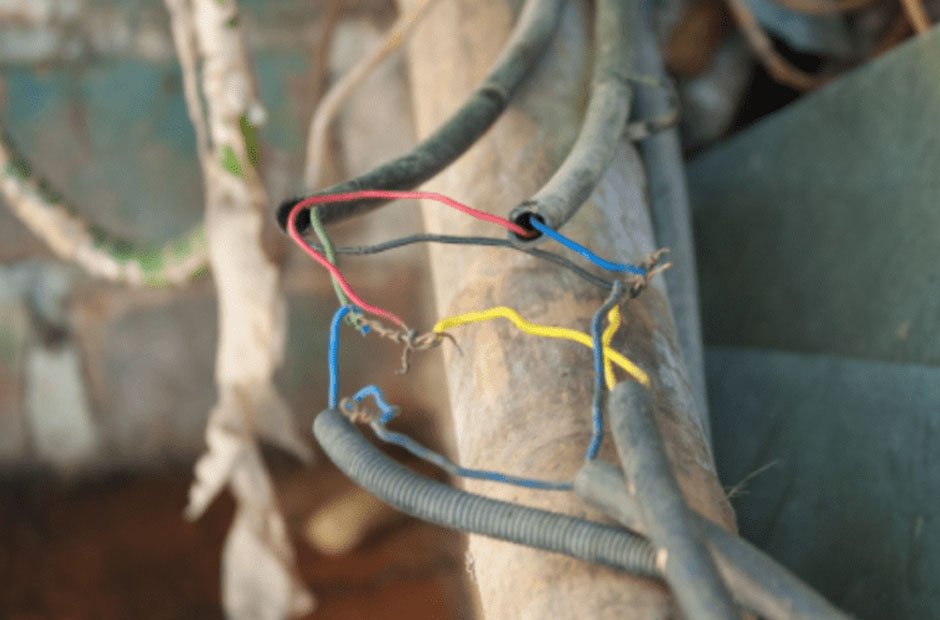The Hidden Risks Lurking in Old Home Wiring
Many homes around the country were constructed at a time when today’s electrical devices and demands could not have been imagined. Beneath the surface, much of the original wiring—especially in houses built before the 1980s—remains unchanged, working beyond its intended lifespan. These aging systems quietly collect wear and tear, while electrical code standards have evolved dramatically. Unfortunately, this hidden infrastructure often escapes the attention of homeowners until a significant issue arises. Faulty outlets, tripping circuits, or the smell of burning plastic are only the most apparent symptoms of a system under strain. Behind the scenes, heat build-up, deteriorated insulation, or even outdated wiring methods, such as knob-and-tube, can easily contribute to disaster. Staying proactive is vital. Modern safety standards and best practices, such as those detailed in expert electrical tips for home renovations, encourage homeowners to recognize their electrical system’s role in their family’s safety. The goal isn’t just about supporting the latest technology but also preventing tragedies before they occur. Research by the National Fire Protection Association (NFPA) has shown that electrical failures or malfunctions are responsible for nearly 34,000 home fires annually in the United States, resulting in hundreds of deaths, thousands of injuries, and nearly $1.5 billion in direct property damage. This makes it clear: old electrical systems demand greater attention from homeowners everywhere.
Common Signs of Unsafe Electrical Wiring
Unsafe wiring isn’t always easy to spot, but subtle and not-so-subtle warning signs are often present long before disaster strikes. Many ignore issues because their home “still works,” but minor nuisances should never be dismissed. Take note if you encounter the following:
- Frequent blown fuses or circuit breakers that trip repeatedly, particularly with common household appliances.
- Lights that dim or flicker for no apparent reason can indicate stressed or loose wiring in the system.
- Buzzing, crackling, or popping sounds from switches, fixtures, or outlets are signs of arcing or poor connections.
- Discolored, warped, or hot switch plates and outlets can hint at ongoing overheating inside the walls.
- A persistent, unexplained burning smell, sometimes accompanied by visible scorch marks or melting around outlets.
- Exposed, brittle, fraying, or corroded wiring is often found in basements, attics, or garages.
These issues may seem inconvenient, but they’re often red flags for more serious underlying faults. According to national statistics, electrical distribution and lighting equipment are the second leading cause of home fires, meaning the trouble often begins inside the walls.
How Modern Lifestyles Strain Electrical Systems
How we use power at home has changed dramatically compared to previous generations. A standard older home was initially designed for little more than overhead lighting and some basic appliances—perhaps a refrigerator, a stove, and a radio. Today’s households simultaneously run energy-hungry HVAC systems, computers, big-screen TVs, gaming consoles, and smart home devices. Add in the rechargeable gadgets, water heaters, laundry machines, and power tools, and it’s easy to see why the old 60-amp or 100-amp service isn’t enough. When modern living meets outdated systems, overloaded circuits and overheating wires become a real threat. Houses with aluminum wiring, ungrounded outlets, or obsolete breaker panels are especially susceptible. Failing to update or adapt your wiring system often means frequent breakdowns and unexpected hazards—and may even shorten the life span of expensive electronics and appliances plugged into unsafe outlets. Energy demands continue to climb as homes grow smarter. Without proper upgrades, these advancements cannot be accommodated safely or efficiently. Investing in better wiring and increased capacity protects your hardware, reduces nuisance outages, and future-proofs your property.
Steps to Safeguard Your Home with Updated Wiring
Protecting your home starts with an honest evaluation of current wiring. Professional help is recommended for assessing invisible risks and mapping out improvements. Follow these concrete steps for a safer, more reliable home:
- Schedule A Licensed Inspection:Have a licensed electrician thoroughly inspect your entire electrical system, from the main service panel down to each accessible outlet and switch. A professional eye is crucial to spot hidden troubles that DIY efforts might overlook.
- Upgrade Faulty Wiring and Materials:Replace old aluminum or knob-and-tube wiring with modern copper wiring, update outlets to be grounded, and install AFCI (Arc Fault Circuit Interrupter) or GFCI (Ground Fault Circuit Interrupter) protection where appropriate. These upgrades bring your home to modern code and drastically reduce fire and shock hazards.
- Install Surge Protection:Whole-house surge protectors shield sensitive electronics and high-value appliances from abrupt voltage spikes, which are increasingly common during extreme weather or grid instability.
- Plan For Expansion:Factor in anticipated upgrades or renovations, such as kitchen remodels, workshop additions, or electric vehicle charging stations. Building in extra capacity now can save significant expense and hassle.
Electrical upgrades can seem daunting, but homeowners rarely regret investing in their property’s foundational safety and performance. After all, peace of mind is priceless.
How Wiring Updates Support Smart Devices and Efficiency
Embracing more innovative and energy-efficient technology at home starts with a reliable electrical infrastructure. Modern wiring supports complex systems like smart thermostats, programmable lighting, security cameras, and even solar panels or battery backup, all requiring pure, steady, and ample currents. Dated or degraded wiring reduces performance and can void warranties on advanced electronics. Energy efficiency gains come from the devices, such as minimizing resistance, preventing heat loss, and properly balancing circuit loads. Upgraded systems can slash utility bills by distributing power more efficiently throughout the house. Even features like dimmers or occupancy sensors, which optimize energy use room by room, work best with the consistent, reliable backbone of modern wiring. Are you looking to install an electric vehicle charger, a high-efficiency heat pump, or solar battery storage? These smart home advances are only possible—and truly safe—when wired to current standards.
The Inspection Process: What to Expect
A comprehensive electrical inspection involves more than just a surface review. Licensed electricians will examine your main service panel for any corrosion, signs of overheating, or out-of-date configurations. Outlets and switches are tested for correct voltage and grounding, while visual checks help identify exposed, fraying, or disconnected wiring. In hard-to-reach areas like crawl spaces, basements, or attics, even a small section of crumbling insulation can signal the need for immediate attention. Afterward, the electrician provides a detailed breakdown of issues, prioritizing repairs or upgrades that significantly impact safety and compliance. Often, urgent hazards can be remedied within a single visit, and larger projects are mapped out to fit the homeowner’s budget and schedule. Transparency and clear communication turn what feels overwhelming into an achievable, step-by-step improvement plan.
Why Electrical Safety Should Be a Top Priority
Few aspects of home maintenance are as critical as electrical safety. Fires caused by faulty wiring can spread rapidly, leaving little time to react. Beyond property loss, lives are at stake—every year, hundreds are injured or killed in preventable electrical fires. Many insurance providers now require electrical inspections for older homes and may even exclude coverage for damages resulting from unaddressed wiring defects. Local fire departments and the NFPA state that homes more than 40 years old should be inspected every 3-5 years or immediately if warning signs appear. Taking such precautions demonstrates care for your family, neighbors, and investment.
Summary: Don’t Wait for Trouble to Strike
Electrical issues aren’t just an inconvenience—they represent hidden dangers that should never be ignored. Whether your home shows telltale symptoms or hasn’t had a recent inspection, acting now is a crucial decision that safeguards what matters most. Keeping your electrical system up-to-date and investing wisely in early detection and upgrades ensures a safer and more comfortable home for years.



